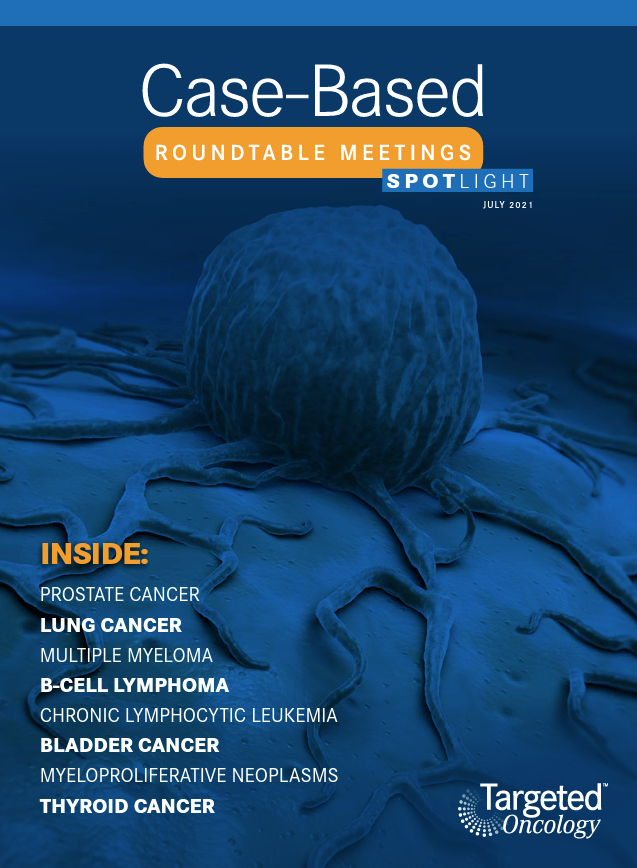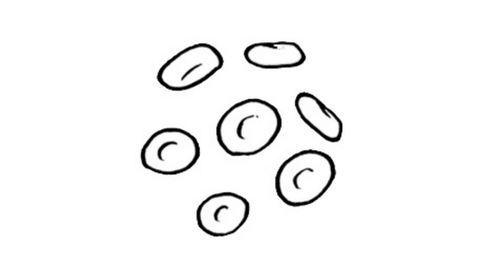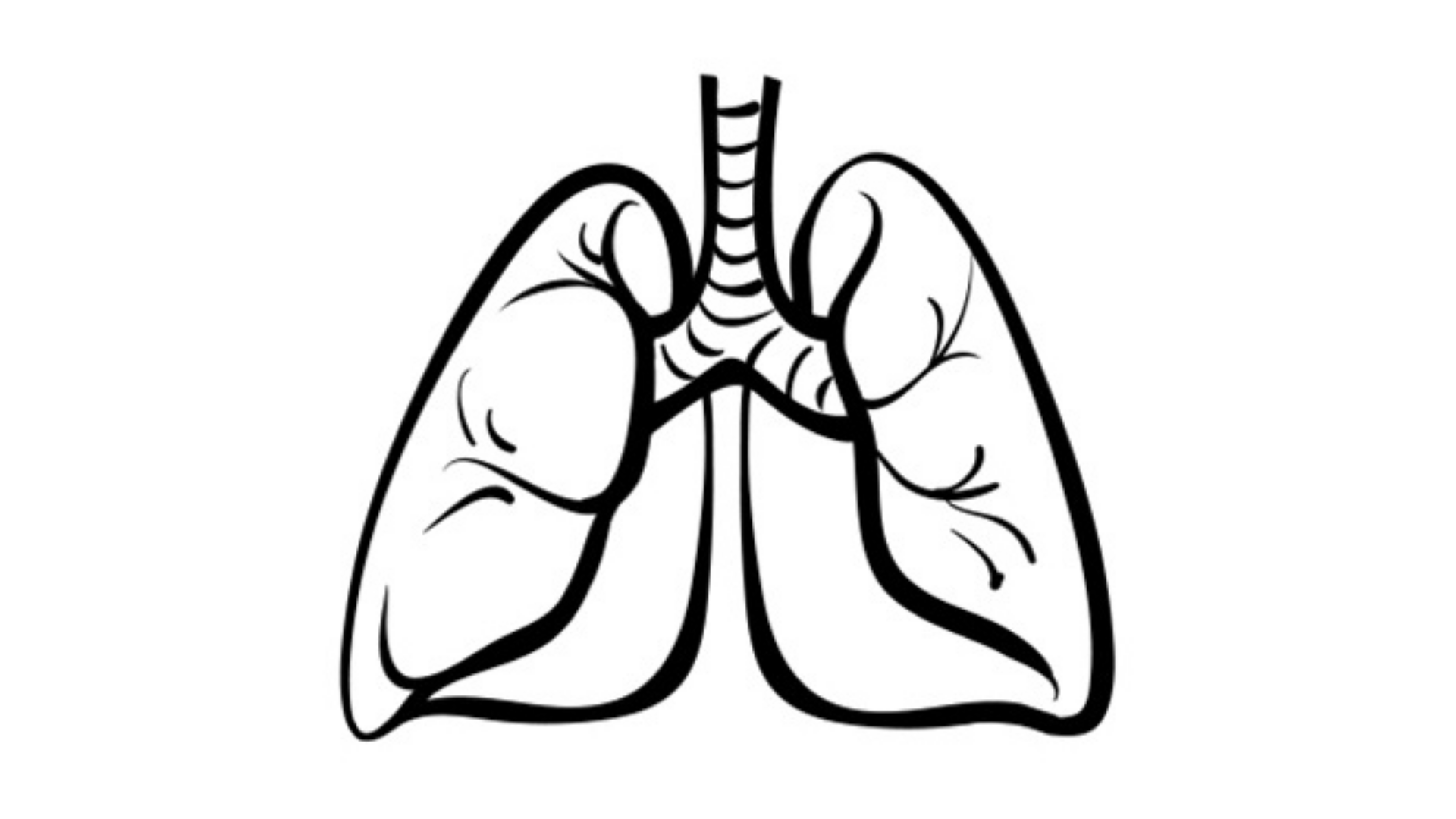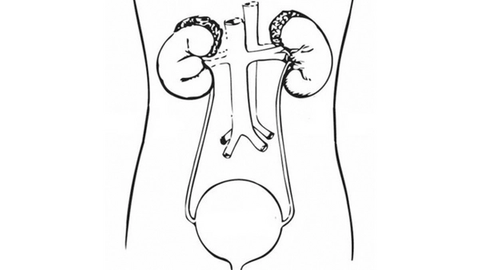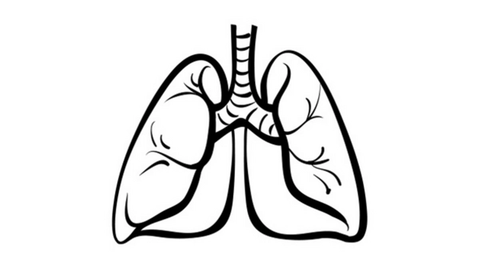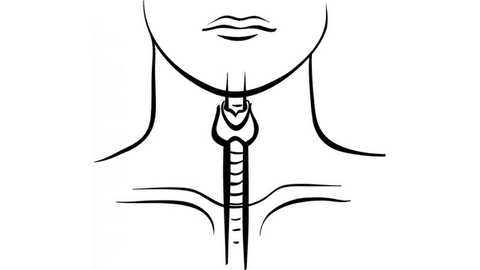Roundtable Discussion: Participants Examine How RET Mutation Impacts Patients With Lung Cancer
Edward B. Garon, MD, MS leads a roundtable discussion on the impact of RET mutations on the lung cancer space.
Edward B. Garon, MD, MS

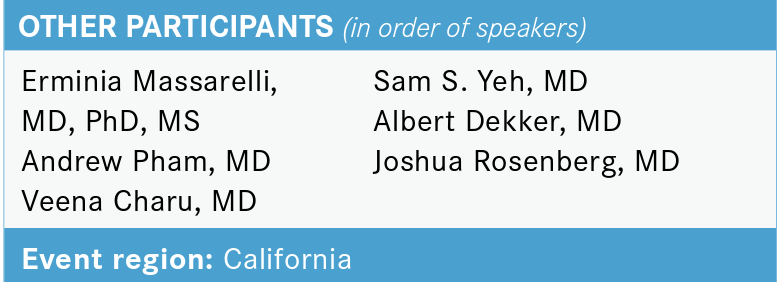
Edward B. Garon, MD, MS leads a roundtable discussion on the impact of RET mutations on the lung cancer space.
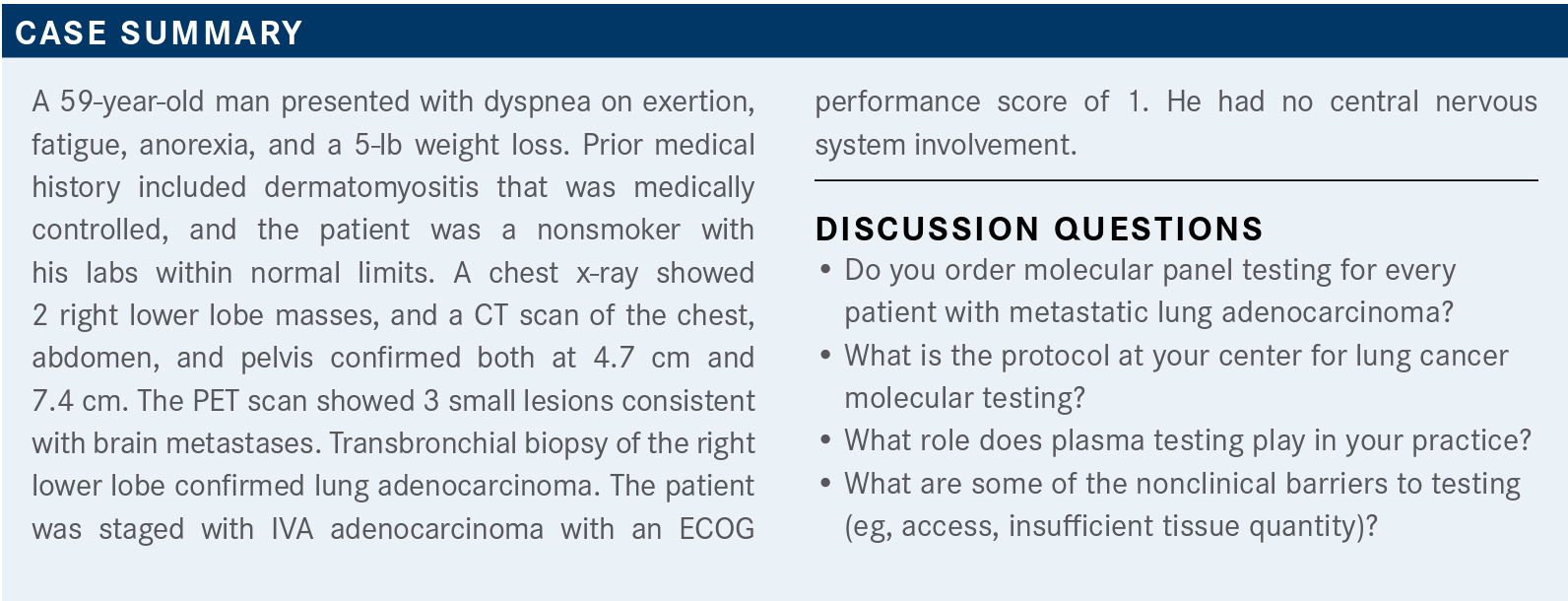
GARON: In my practice we’ve been using Tempus frequently. In fact, we’ve been using circulating tumor DNA (ctDNA). One of the nice things is that for basically a single charge, you can do that and testing of the tumor. So that’s what we have done, but I’m guessing that other people have different approaches they’re taking.
MASSARELLI: We also do liquid biopsy and next-generation sequencing [NGS]. With NGS, we have 2 different in-house molecular tests if patients don’t have one done commercially.
GARON: Anybody else want to share their approach to molecular testing?
PHAM: I do the same. [If for some reason Tempus isn’t covered], usually we can get by with using Guardant Health or Foundation Medicine and then getting tissue through their health maintenance organization.
CHARU: I also send the tissue to Foundation or Caris Life Sciences, and if I don’t have sufficient tissue, then I would also do a liquid biopsy. If I need to treat somebody urgently, then I will do a liquid biopsy pending the tissue biopsy results.
GARON: We have a few different approaches, and I think that if you ask nationally, you find a lot of different approaches. This is something that is still in flux, but I think that the [main issue] is insufficient tissue quantity. I think...people who have been doing this for a longer period and have been doing more molecular testing—the radiologists or pulmonologists—have been a little more aggressive about obtaining tissue, and it makes it a little bit easier. I think that things are evolving in that direction. We still run into issues [when] we run out of tissue but not as much as we used to.
YEH: Can I just ask you a question about the testing that you mentioned earlier? You said you guys do NGS and plasma at the same time or separately? I wasn’t sure. I think I heard you mention doing it together.
GARON: Some of the newer tests made our old testing platform no longer viable, and we’re continuing to work on what we consider our solution to be over the long term. Currently, one nice thing that we have liked with Tempus is that there’s a single charge, basically, for genomic testing. When we see patients in clinics, we can order the liquid biopsy, and sometimes they will have already had tissue go off and sometimes we’re able to send tissue off. But that’s been the approach that we have taken.
I’m not advocating for that company necessarily, but the one thing that became problematic is that we thought it was a little bit hard to do both. When we were using separate vendors, the patients would get separate charges for that because sometimes, but not always, those charges are redundant; if the liquid biopsy came back in a short period of time and says they have an EGFR mutation, that’s what the tissue is going to come back. The issue is that, at least to date, the blood results are coming back faster than the tissue.
YEH: So you’re doing a liquid biopsy, and if the liquid is negative, then you do tissue?
GARON: You’re not necessarily waiting for negativity on the liquid biopsy. The problem with that is we don’t want to wait, and again I’m not saying that we have the system completely worked out or that this is the correct result, but we have been doing it simultaneously. The thing that we like about our system is that it doesn’t cost the patient any more money.
YEH: Oh, I see; that’s nice. Does that increase your sensitivity, or will you find something that’s negative? Let’s say if tissue is negative, the liquid may pick up something and vice versa. Is that what you’re doing?
GARON: Yes, the reason we’ve been doing it this way specifically is that we appreciate the speed of liquid biopsy, and that has been helpful for us. We like the comprehensiveness of the tissue biopsy. There are instances, as you point out, [when] the tissue does not show an actual result, but the blood does. In our [practice], we have found the tissue to be more sensitive but the blood to be faster, which sometimes matters.
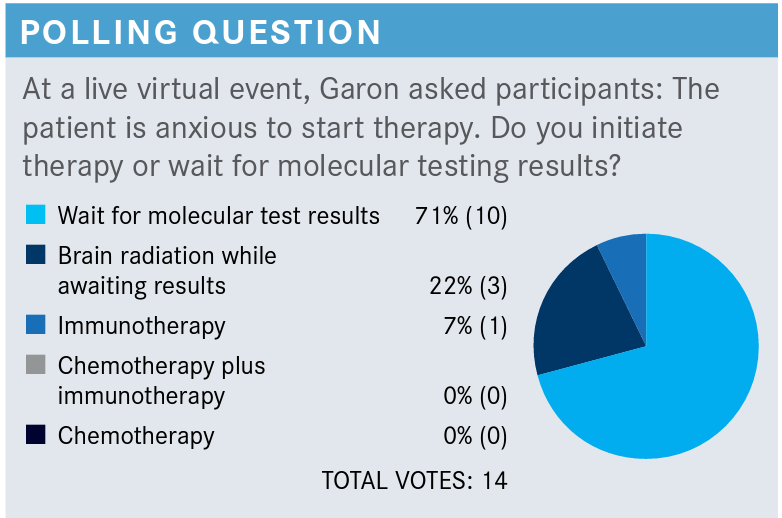
GARON: The one thing I wanted to point out with chemotherapy plus immunotherapy or in immunotherapy generally, we have wanted to know at least the results for EGFR and ALK because in those cases, those are outside of the approval for single-agent or combination PD-1 inhibitor plus chemotherapy. Oftentimes, at least at our center, if there is a patient we feel really pressed to treat, we’ve generally gone with chemotherapy alone, pending the results for those EGFR and ALK tests.
Although brain radiation while awaiting the results, which was about 1 in 5 people [advocating] that, certainly is a reasonable approach. This patient had lesions that were small, particularly in a nonsmoker. Many of these targetable mutations may come back as something where you’d be able to manage those with targeted therapy. It’s certainly not an incorrect answer, but I think [it’s] not clear—outside of the patient anxiety—that there’s a huge need to start therapy immediately in this patient.
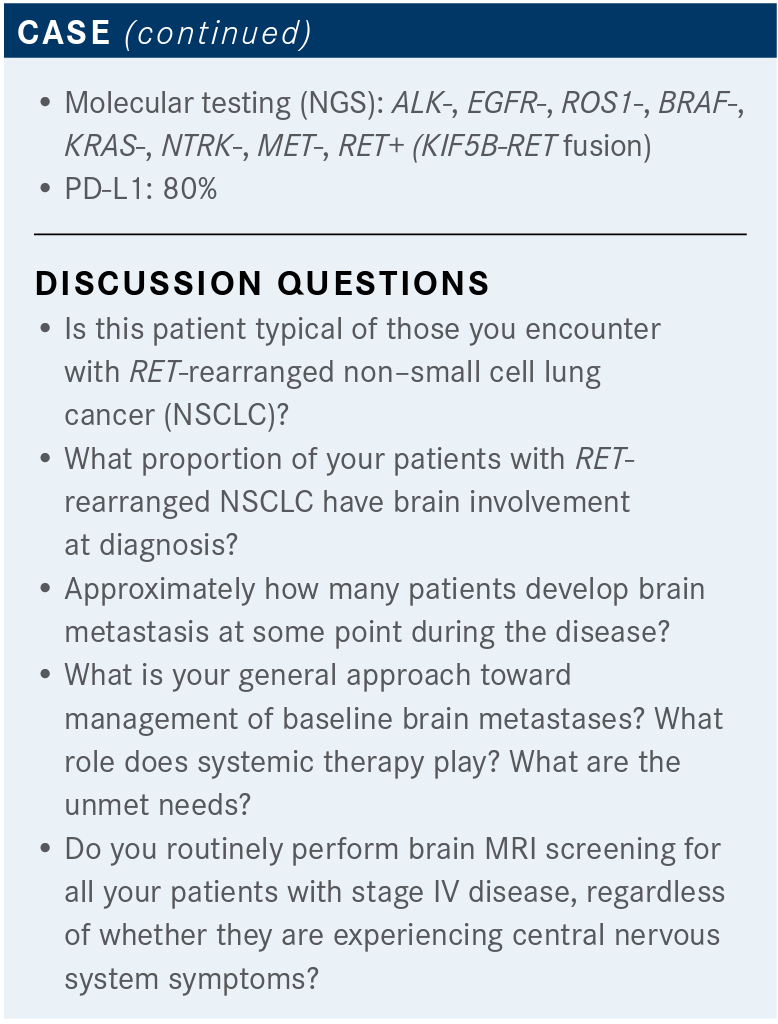
GARON: In lung cancer, what we generally [see in patients] are RET fusions.…The question is, is this a typical patient? I would say, in large part, it’s reasonably typical in that it’s seen in nonsmokers, like this patient. Brain metastases are fairly common at the time of diagnosis, and as we’re finding with many of our targetable mutations, brain metastases developing at some point during the course of therapy is very common.
But do you routinely perform an MRI on all of your patients? I will say I do, but I think the strength of that opinion, for me, on getting MRI for everyone has declined a bit. In many cases, even if I find MRI-positive disease in the brain, I don’t necessarily treat, but that has been my standard approach. Anybody else want to discuss their approach to MRI screening in metastatic lung cancer, even in the absence of symptoms, or about management of brain metastases early on?
DEKKER: I screen everybody. If somebody has a large volume of the disease, I treat. If somebody has a small-volume disease and the disease is primarily asymptomatic or [if] I think I will start targeted therapy weekly, I may wait. But if somebody is symptomatic or if I foresee difficulty to get a tyrosine kinase inhibitor [TKI], I will go ahead and treat that patient.
GARON: That’s very similar to what my approach has been.
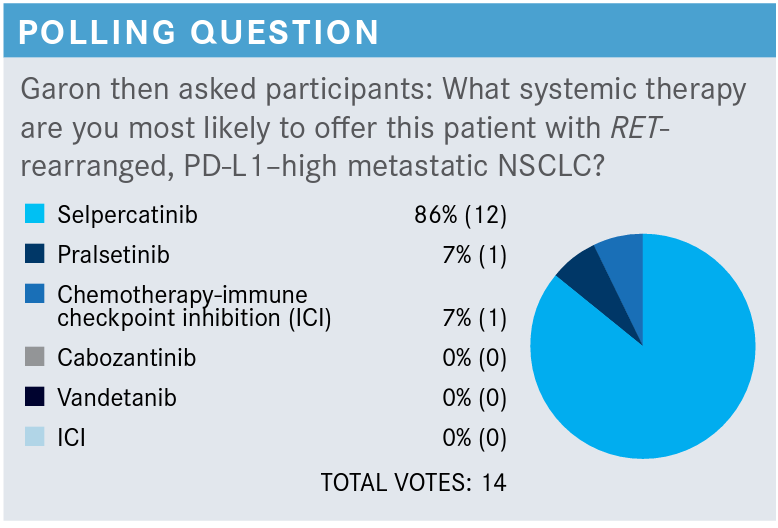
GARON: What you can see is that most people would go for selpercatinib [Retevmo]. Pralsetinib [Gavreto] was also a choice, and I think also a very reasonable choice. Nobody chose cabozantinib [Cabometyx] and vandetanib [Caprelsa], and I would say that I concur with [that choice]. Those are the ones that I would say we have strong data that the efficacy of those compared with selpercatinib and pralsetinib is significantly lower, and that—paired with a greater toxicity in general—in my view at least, I don’t think that’s something we would frequently go to knowing that both these other drugs are available.
In defense of the 1 person who chose chemotherapy plus ICI, what I would say is that although for one ICI alone, we don’t have great data in patients who have a high PD-L1 status like this in such a small subset. The one thing that I also would point out is that in, for instance, the KEYNOTE-189 study [NCT02578680], the patients who were nonsmokers, again knowing that EGFR mutations and ALK gene rearrangements were not allowed, did quite well on chemoimmunotherapy. Although I voted for one of the RET inhibitors, I think chemoimmuno- therapy is certainly a reasonable approach. However, I think I do have some preference toward the RET inhibitor in this setting, and that’s not true of every driver mutation–positive group.
MASSARELLI: I have a question for you: If you started a patient on chemoimmunotherapy, and then the molecular test comes back and you find RET fusion, what do you do? Do you continue them on the ICI maintenance? Or do you switch to the RET inhibitor?
GARON: I can tell you what my approach would be— again this was not the choice I made—most of these patients have nonsquamous NSCLC. And if I were going to start chemoimmunotherapy, I would continue it, and I would use RET inhibition at the time of progression. In fact, a large percentage of the patients who were on study would have received that. Now there are concerns when you use any of these targeted agents after a PD-1 inhibitor or PD-L1 inhibitor. Although I would argue that if you already gave 1 dose, you’ve already taken on that risk, so there’s not a lot of reason that I would switch at that point.
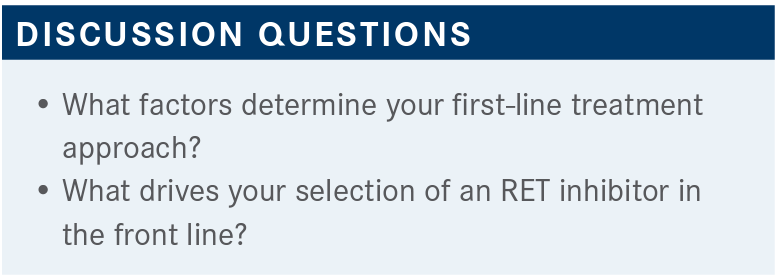
CHARU: If you use the RET inhibitor, does it have more adverse effects, like the EGFR agents?
GARON: The question there is whether or not there’s more toxicity after an immunotherapy. It’s not a question I’ve specifically been working on. Certainly, almost all these agents do have some enhanced toxicity in the TKIs when you do this. The one that I would specifically be concerned about is [liver function tests that show abnormalities], but I don’t specifically know data on that. Dr Massarelli, do you have [those] data?
MASSARELLI: No, we don’t have the specific data yet. We would have to probably wait on the LIBRETTO-001 [NCT03157128] data because most of these patients were already treated with prior ICIs, but we don’t have these data yet.

DEKKER: Obviously, we have very good data sets. We have very effective agents, and now more of us just need to have patients try them out.
ROSENBERG: I’d be curious to know [if there is] a specific patient where [you might give] pralsetinib over selpercatinib. It seems to me you could argue selpercatinib might have some stronger data. Are you seeing any early information regarding any kind of acquired resistance, secondary mutations where you can then subsequently utilize a targeted agent in the second-line space with either of these?
GARON: So what happens when somebody progresses? Well, I just think we’re a little early in this. This is a fairly rare mutation and it’s listed as 1% to 2%, but that 2% figure is high, in my estimation. I think that has a strong bias toward younger patients, and at an academic center like mine, we tend to have [a significantly younger patient population]—that tends to be who gets referred into a major center—so I think that there’s a skew of that across a lot of the data and I think the real number is closer to 1%. There is certainly work on this. I don’t think the answer is going to be some of our earlier agents. I’m not aware of good data for one or the other.
